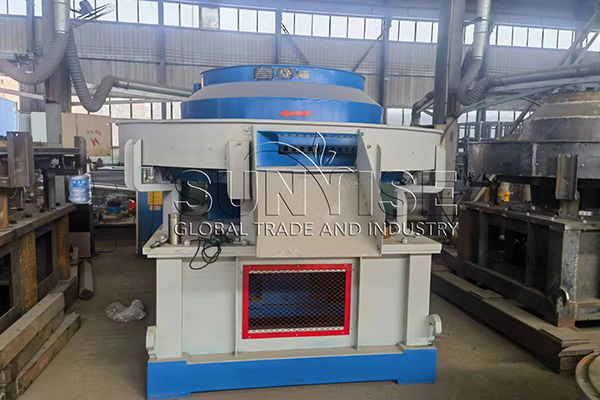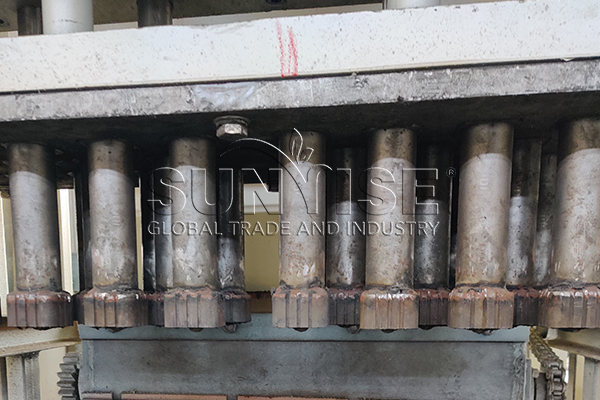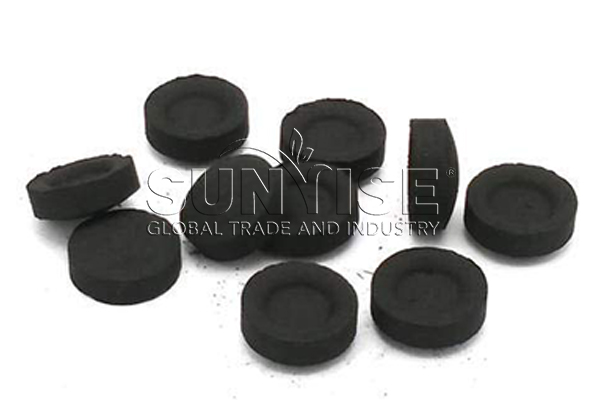During the whole process of the charcoal production line, briquette-making machine is the equipment that can bring more added value to the final products. The charcoal briquette-making machine helps the charcoal powder become more sturdy and solid. With high-pressure pressing, the charcoal briquette can change into the shapes that customers require. To meet the needs of the customer, there are many types of briquette making machines. The customers can choose the suitable one on the basis of their conditions.
What is the charcoal briquette making machine?
For the charcoal processing line, the charcoal briquette machine plays an important role in the whole process. The applications of this machine are various. It can be the forming machine of the charcoal powder, and it also can be the molding machine of the raw material to make the carbonation process more convenient.

For Raw Material
Since the raw materials of the charcoal briquette making machine are most biomass debris, it is difficult to fully utilize the energy of the material. The briquette making machine can reduce wastage. The volume of the material will appear to be a huge reduction after pressing, and the regular shape is more convenient for carbonation and storage. Therefore, more materials can fit in the carbonation furnace after pressing to lift up the efficiency of production.
For Charcoal Powder
The main function of the charcoal briquette making machine is to deal with the charcoal powder. After the carbonation, the charcoal bulk gets into the grinding machine to process the further step. Then the charcoal powder is going to be set in many different shapes through the briquette making machine. When the charcoal powder gets the appropriate operation, the charcoal briquette is much easier to make full use of it.

How does the charcoal briquette machine work?
The working method of the charcoal briquette making machine uses physical changes of high-pressure pressing. With a clear view of the working principle, the working process of the machine is much easier to understand. As a machine that can fit in many industries, the quality and technology of it are always the state of the art.

Working Parts
With the simple working principle, the briquette-making machine contains no exaggeratedly high level of techniques. The key part of this machine is the pressing system. The upper and lower molds and the mold compose this system. The hydraulic pressure system is the part that provides pressure for the molds to press materials. The mold decides the shape and size of the final products. All these components make up the charcoal briquette-making machine.
Working Process
The briquette making process starts with the outputs of the carbonation furnace. The products will straightly go to the grinding machine, and in this process, the operator can add adhesive to the materials to improve the strength and stability of the final products. Once the charcoal powder is ready, the briquette making machine is coming into play. When the charcoal powder gets in the inlet, the upper and lower molds are going to press the charcoal powder in the molds. After the compression, the process of making charcoal briquettes finishes.

How many types of charcoal briquette making machines?
In order to comply with the demands of the customers, Sunrise Machinery Company comes up with many different types of charcoal briquette-making machines. Each one of them has its own characteristics to fit in the specific circumstance.

The extruding machine is a unique type of charcoal briquette making machine. Unlike other briquette machines, the extruding machine turns the charcoal powder into various types of charcoal sticks. For the raw materials that are chips and debris, this machine can stick the material together to save space and improve efficiency.

The briquette machine is the most common forming machine for the charcoal processing line. This machine can produce the classic shapes of briquettes and pellets, and many customers choose this machine to produce charcoal briquettes. What’s more, the left charcoal powder can get into the recycle and be pressed again.

The rotary press machine usually produces the charcoal tablet. With the rotary system, the final products can come out of the machine automatically. On account of this design, productivity can have a great increase. All the final products of rotary press machines have the even structure and strength to maintain the quality of the products.

The productivity of impact forming machines also stands out among all the forming machines. The machine uses impact force to form the material, so it has the advantages of fast forming speed and high production efficiency. Since the machine presses the materials in the mould, the stability of the quality of the final products is something that can spare no worry.
What are the advantages of using charcoal briquette making machines?
Since the charcoal comes out of the carbonation furnace in the condition bulk, some people may have a question that why the charcoal needs to become powder and becomes briquette again. Is it necessary to have a charcoal briquette making machine in the charcoal production line? The following advantages may contain the answer to this question and explain why the forming machine is necessary for the processing line.
How to choose a suitable machine for the charcoal-making factory?
The number of briquette machines kinds can reach 4, so it is difficult for a beginner in the industry to choose a suitable machine. The Sunrise Machinery Company is a manufacturer that you can put faith in, with many years experience in machine-making, the company can provide some advice to consider before purchase. Here are some factors that the customers should focus on.
The charcoal briquette making machine is one of the inevitable machines in the production line. In order to improve the quality of the final products, the briquette machine is the perfect choice. If you would like to learn more about the charcoal briquette machine, please leave your message. The customer service staff will contact you as soon as possible.



